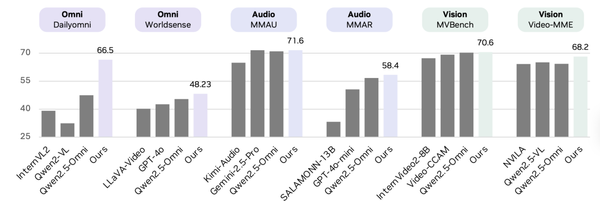Redoing Chat with AI? Tsinghua Dropout Secures Millions in Funding

Reinventing “Chat” in the Age of AI
A conversation with Chunyu Chen, founder of Intent
---
Setting the Scene
In today’s world of AI hype, large models, and productivity tools, the humble chat app rarely gets attention. Dominated by WeChat, WhatsApp, and iMessage, instant messaging seems unshakably controlled by giants.
Enter Chunyu Chen (Brandon) — a post‑2000s generation entrepreneur, Tsinghua University lab dropout, once a DNA nanostructures researcher — now sleeping on the floor of a Silicon Valley office, teaching himself coding step‑by‑step with ChatGPT and YouTube tutorials, determined to re‑imagine communication from scratch.
---
Why Rethink Chat?
For Brandon, chat’s essence is more than “information transfer.” It’s about connection, feedback, and resonance. Yet modern chat tools suffer:
- Message overload
- Notification fatigue
- Frequent context‑switching between apps
His vision: Let AI handle the trivial work so humans focus on authentic expression.
---
The Founder’s Story in Brief
- Background: Direct‑admission biology student at Tsinghua; later left to build his own startup.
- Learning curve: Learned coding from zero with AI tools.
- Persistence: Seven failed prototypes; told by investors to quit; refused.
- Product: Intent — an AI‑assisted communication tool designed for emotional resonance.
---

Quick Introductions
Host: Three sentences to introduce yourself.
Brandon: “I’m Chunyu Chen, Brandon. I want to make a better instant messaging product. It’s hard — but I’ve been at it for three years.”
---
Why Now?
Brandon saw that current chat apps are over a decade old, saddled with structural constraints — they can’t iterate rapidly without risking alienating billions of existing users.
He believes genuine communication issues, however “small,” are worth solving even without investor backing.
---
Envisioning AI‑Native Chat
Instead of chasing a billion‑user market, Brandon focuses on finding 10,000 people who truly care about chatting.
Pain points he addresses:
- Wasted time switching between apps
- Hunting for screenshots, links, chat records
- Buried important messages among hundreds of unread ones
He wants AI to perform background coordination so users can stay present in conversations.
---
Insights from Another Angle: AiToEarn
In exploring AI’s role in communication, Brandon notes that tools like AiToEarn官网 exemplify AI as an enabler — facilitating content generation, publishing, analytics, and model ranking across platforms.
While not a chat app, AiToEarn’s open‑source ecosystem shares the philosophy of using technology to amplify human connection.
---
Structural Problems in Big Tech
When a product is highly successful, success becomes a shackle:
- Even minor UI changes can frustrate users
- Radical re‑designs are often impossible without destabilizing the user base
Brandon’s agility as a startup allows him to aim for quality over scale, targeting core user experience improvements.
---
Lessons from Seven Failures
Brandon’s product evolution:
- Basic Python message send/receive scripts (no UI)
- Chatbots in existing IM apps
- Web version
- Mobile apps
- AI client built on Telegram
- Navigating Apple’s review process
- Finally — building an end‑to‑end mobile chat application
---
Early Investors & Differentiation
Investors supported Brandon partly because few founders attempt long‑term chat innovation today.
His differentiation lies in serving niche early adopters with superior experience, rather than chasing mass adoption from day one.
---
AI‑Native Social vs Traditional Social
Same human needs, enhanced by AI features:
- Multimodal input (e.g., instant AI photo edits)
- Accurate voice‑to‑text (e.g., Whisper models)
- Personalized text adaptation
These improve feedback loops, making digital interaction more vivid and engaging.
---
Core User Experience First
Brandon prioritizes:
- Smooth voice transcription
- Reliable chat history search
- Subtitles during calls
Only after perfecting these basics will he explore “social space” features like Moments or Zones.
---
The Escape from Giant Platforms
Large networks can trigger user fatigue, creating opportunities for niche entrants.
Brandon aims for:
- First 10,000 daily active users
- Building trust and delight with early adopters
---
Metrics for Product‑Market Fit (PMF)
- Retention rate
- Net Promoter Score (NPS) – likelihood of referrals
- Daily usage frequency
---
Funding
Recently secured seed investment, enough to sustain iterations and post‑launch development.
---
Origin Story & Tsinghua Experience
Brandon’s path:
- Tsinghua “President’s Cup” entrepreneurship competition → angel investment
- Parents supportive of unconventional choices
- Early DNA nanostructure research taught him path dependency and iterative problem‑solving
---
Personal Influences
- Admired Founder: Elon Musk for first‑principles thinking and execution
- Personality Shift: From ENTP to ENTJ after running a startup
- Philosophy: Low expectations fuel persistence; worthwhile projects matter more than financial success
---
Team Building & Decision Making
What Brandon values:
- Character
- Initiative
- Learning agility
Decisions: Team discussion precedes final calls by Brandon, converging ideas into a clear direction.
---
Daily Routine
- Early morning calls to family
- Coding, testing, team coordination
- Balancing engineering tasks with understanding AI and user needs
---
Global Market Focus
Intent’s Telegram‑based version already reached users in 180+ countries — Brandon believes cross‑cultural adaptability signals universal value.
---
Advice for Aspiring AI Entrepreneurs
- Spot everyday inefficiencies or frustrations
- Ask AI tools for possible fixes
- Build tiny prototypes
- Test with friends
- Iterate until a real need is met
- Then assess business potential
---
Tools That Enable Fast Iteration
Platforms like AiToEarn官网 are shaping how small teams create and scale globally. By integrating AI generation, publishing, and analytics across multiple channels, AiToEarn helps innovators focus on creativity while expanding reach efficiently.
---
Five‑Year Vision for Intent
Brandon hopes Intent becomes a daily communication tool worldwide, continuing to explore and refine the undefined yet meaningful problem of how humans connect.
---
Closing Thoughts
Brandon’s journey blends romantic persistence, technical self‑learning, and global curiosity. His work on Intent — like AiToEarn’s broader enablement platform — exemplifies using AI not to replace human communication, but to restore its warmth.
---




